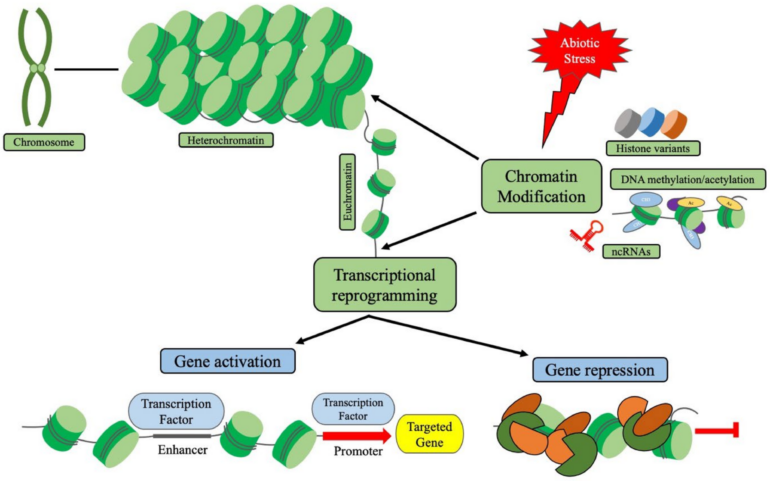Chromatin is a unique DNA and protein complex that makes up the chromosomes. Specific proteins (histones) wind up the DNA like small cable drums to package the long DNA. A cable drum (consisting of four pairs of histones) with coiled DNA is called a nucleosome and is the smallest unit of chromatin.
Known as the supportive scaffold for chromatin, the nuclear matrix has intrigued scientists since its discovery in the 1970s. While its existence in mammalian cells was recognized, its significance in plant nuclei remained elusive. The international research team has now unraveled this enigma, shedding light on the composition of the nuclear matrix and how the nuclear matrix influences chromatin status and plant development.
The study identified many proteins associated with the nuclear matrix in Arabidopsis thaliana. Among them are well-known nuclear matrix proteins, including AtSUN1, AtSUN2, and AHL22, along with novel players FRS7 and FRS12. “This discovery expands our understanding of the molecular composition of the nuclear matrix,” says Prof. Dr. Hua Jiang, head of IPK’s independent research group “Applied Chromosome Biology.”
The research goes beyond merely identifying components; it delves into understanding the functions of the nuclear matrix and its associated proteins in chromatin regulation. Utilizing genome-wide sequencing, the researchers, for the first time, identified the genome-wide distribution of regions attached by the nuclear matrix in plants.
“The results show a preference for the head and tail of gene coding regions, mainly linked to active epigenetic marks and highly expressed genes, with some lowly expressed genes also attached by the nuclear matrix,” says Linhao Xu, first author of the study. These findings suggest compound functions of the nuclear matrix in chromatin and transcriptional regulation.
Furthermore, the study unveils AHL22, collaborating with FRS7 and FRS12, as a central regulator in hypocotyl elongation, the upward growth of the embryonic axis in a plant seedling, occurring between the emergence of the short and the root. The process is essential for plant growth and survival. By regulating the expression of genes essential for the auxin signaling pathway, AHL22 functions as a conductor for chromatin and epigenetic regulators.
“The AHL22 complex orchestrates the attachment of genes to the nuclear matrix, recruiting histone deacetylase HDA15 to modify histone acetylation,” says Shiwei Zheng, also a first author of the study. “This positions the AHL22 complex as a central hub for chromatin regions and epigenetic regulators, revealing a previously unknown facet of nuclear matrix function.”
Given that the nuclear matrix serves as a key regulator of chromatin and chromatin status responses to environmental changes, exploring the function of the nuclear matrix in response to conditional stress becomes particularly intriguing.
The findings are published in the journal Nature Communications.
More information:
Linhao Xu et al, Chromatin attachment to the nuclear matrix represses hypocotyl elongation in Arabidopsis thaliana, Nature Communications (2024). DOI: 10.1038/s41467-024-45577-5
Provided by
Leibniz Institute of Plant Genetics and Crop Plant Research
Citation:
Researchers identify a key player in chromatin regulation in Arabidopsis thaliana (2024, February 23)



